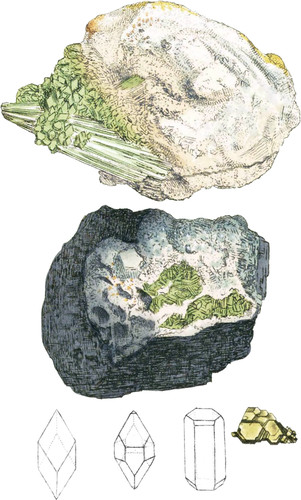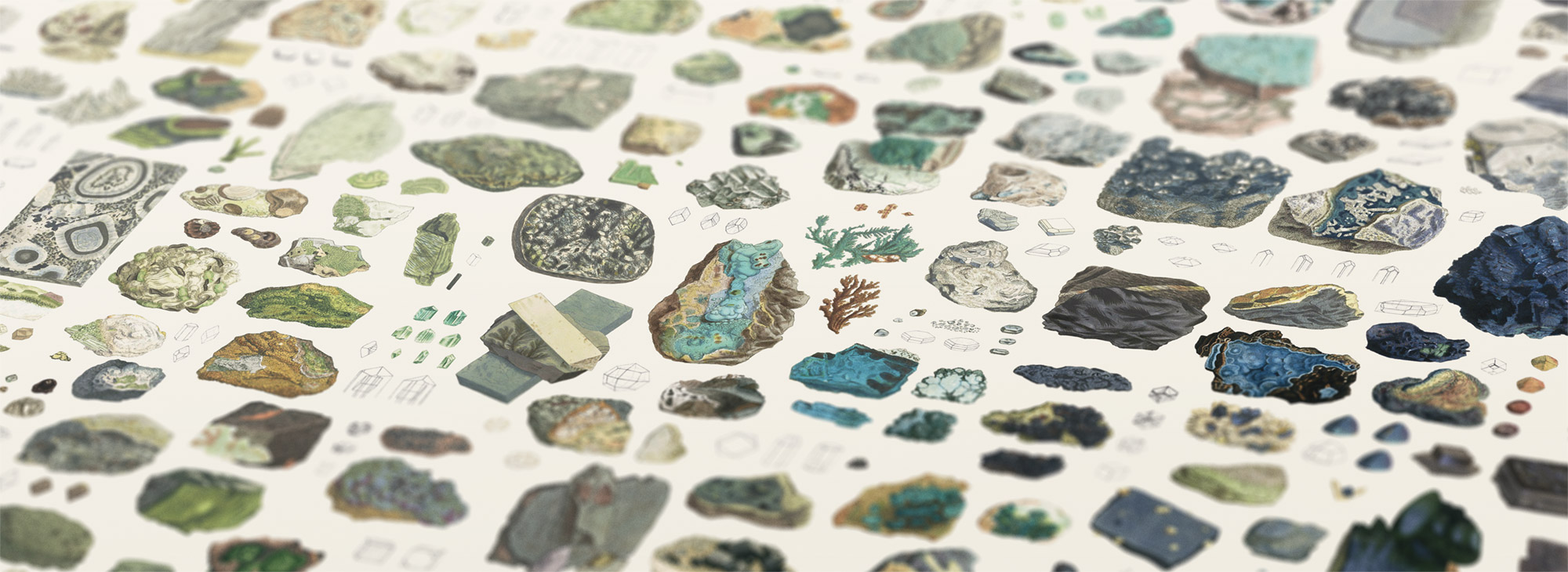 Enlarge
Enlarge
British Mineralogy
Rhomboidal Carbonate of Lead
- Class 3. Metals.
- Ord. 1. Homogeneous.
- Gen. 15. Lead.
- Spec. . Rhomboidal Carbonate.
- Syn. Plomb carbonaté rhomboidal. Bournon Catalogue 343.
This Carbonate of Lead is rare, and seldom noticed among those found at Wanlock-head; the crystals are generally small, but well defined and interesting. The Count de Bournon considers the primitive crystal to be an acute rhomb, whose angles are 60 and 120°: this rhomb is often truncated at the apex, and the face produced has a micaceous or pearly lustre: the crystals are also laminated in a direction parallel to this face. By the truncation of the other angles, this rhomb passes into a hexaëdral prism, and when this prism is very short, it becomes a hexaëdral plate, the terminal faces of which being pearly, give it a great resemblance to Mica; from which, however, its weight, brittleness, &c. readily distinguish it. The pearly lustre of the terminal planes, its superior hardness, and primitive form, distinguish it from the common Carbonate of Lead; it may also be known by its melting into a yellowish gray bead, without first becoming bright yellow and powdery, as the common Carbonate does.
The upper figure represents a specimen lent me by my very kind friend G. L. Meason, esq. It is on a mass of common Carbonate of Lead, and it exhibits two varieties; one in long prisms collected together in a large scopiform manner; the other, rhomboidal crystals with their apices truncated. The next figure shows small hexaëdral prisms upon Galæna. On the right hand at the bottom, I have added a large crystal of a brownish colour? one of those described by the Count de Bornon. The tabular variety I have figured in tab. 342 as a variety of the common Carbonate, not having information enough at the time to consider it a distinct species.

